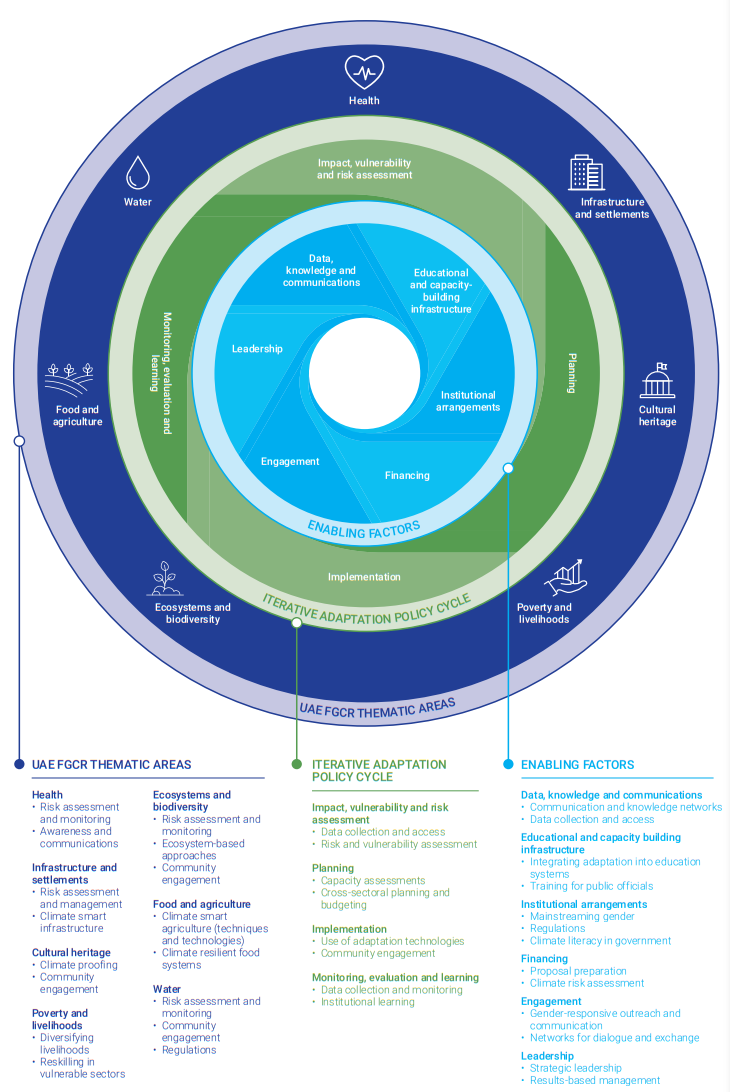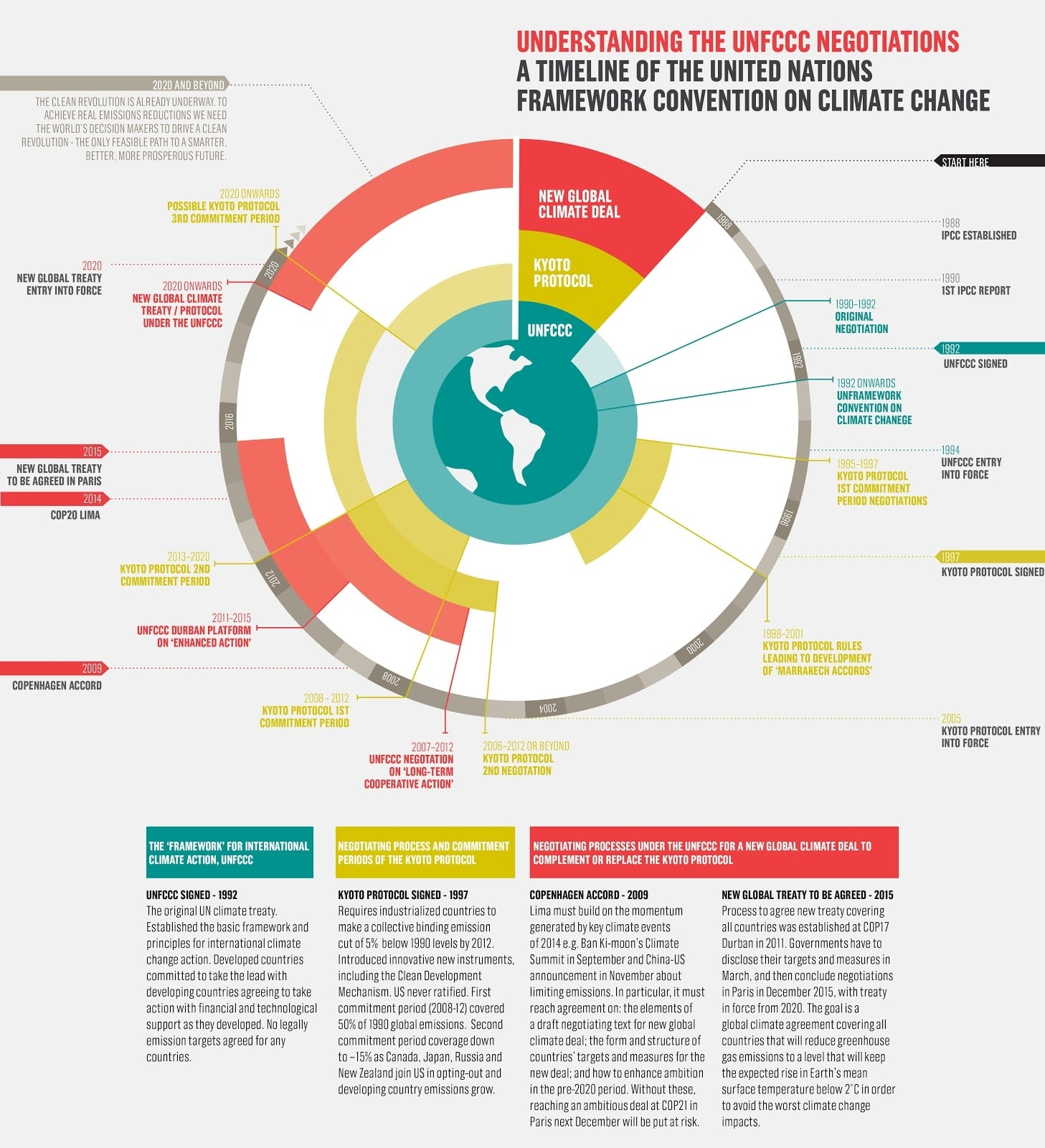Biodiversity & Environment
UNEP's Adaptation Gap Report 2024
- 13 Nov 2024
- 9 min read
For Prelims: United Nations (UN), Adaptation Gap Report, UN Environment Programme (UNEP), Nationally Determined Contributions (NDCs)
For Mains: Need for Revamping Climate Financing, Challenges in Climate Adaptation Financing
Why in News?
Recently, the United Nations Environment Programme (UNEP) released the Adaptation Gap Report 2024: Come hell and high water.
- The report stresses the need for significant increases in climate adaptation efforts, particularly regarding adaptation financing for developing nations.
What are the Key Findings of the Adaptation Gap Report 2024?
- Adaptation Finance Gap: The adaptation finance gap, indicating the disparity between financing needs and actual funds, has widened.
- Current funding (2022) is significantly below requirements, with only USD28 billion provided—meeting just 5% of the projected needs under the Glasgow Climate Pact.
- Glasgow Climate Pact aims to reduce methane emissions by at least 30% below 2020 levels by 2030.
- UNEP estimates developing countries need USD 387 billion annually by 2030 for adaptation.
- Current funding (2022) is significantly below requirements, with only USD28 billion provided—meeting just 5% of the projected needs under the Glasgow Climate Pact.
- Funding Crunch: Only about one-third of the adaptation finance gap is in sectors typically funded by the private sector, leaving significant opportunities for private investment.
- Impact of Global Warming: The Emissions Gap Report, 2024 indicates that global temperatures could increase by 2.6°C to 3.1°C above pre-industrial levels by 2100.
- Developing countries suffer the most from climate-induced weather events despite having minimal contributions to global greenhouse gas emissions.
- Recent floods in Nepal, Nigeria, and Chad underscore the financial and infrastructural vulnerabilities of these nations.
- Progress on National Adaptation Plans (NAPs): While 171 countries have at least one adaptation policy, out of 26 countries without an adaptation policy, 10 are uninterested in developing one, indicating slow progress in NAP planning and implementation.
- The UAE Framework for Global Climate Resilience (UAE-FGCR), introduced at UNFCCC COP28, sets dimensional and thematic targets (e.g., agriculture, water, health) for adaptation, yet implementation is lagging.
- It is the first international declaration of its kind with climate adaptation as the primary focus.
- The UAE Framework for Global Climate Resilience (UAE-FGCR), introduced at UNFCCC COP28, sets dimensional and thematic targets (e.g., agriculture, water, health) for adaptation, yet implementation is lagging.
- Transformational Adaptation: UNEP calls for a shift from reactive to strategic adaptation, addressing harder-to-finance areas like ecosystem preservation and cultural heritage.
- The concept of "transformational adaptation" was contentious during COP28 but is considered crucial for addressing the rising risks.
- Transformational Adaptation refers to actions that adapt to climate change by making substantial changes in structure or function, surpassing mere adjustments to current practices.
- The concept of "transformational adaptation" was contentious during COP28 but is considered crucial for addressing the rising risks.
What are the Challenges in Climate Adaptation Financing for Developing Countries?
- Limited Financial Capacity: Adaptation projects like seawall construction, resilient infrastructure, and water security are financially burdensome for developing countries.
- Shortfall in Developed Countries' Contributions: Developed nations, despite obligations under climate agreements, have fallen short on promised financial support, notably the USD100 billion goal set for 2020.
- Dependence on High-Interest Loans: Much of the current funding consists of high-interest loans, exacerbating debt burdens and creating financial strain for recipient countries.
- Urgency of Financial Commitment at COP29: The goal to double adaptation finance by 2025 will only partially bridge the gap, highlighting a need for innovative financing models.
What are the Efforts and Commitments Adopted to Address Climate Change?
- Global Efforts:
- Glasgow Climate Pact and Doubling Finance Goals: At UNFCCC COP26, developed countries committed to doubling adaptation finance from 2019 levels of USD 19 billion to USD 38 billion by 2025 and establishing a new climate financing goal for 2030.
- ADB Climate Adaptation Investment Planning Programme (Asian Development Bank 2023): It's a regional program helping ADB's developing member countries create adaptation investment plans from their national adaptation priorities and goals.
- UNDP Adaptation Accelerator (UNFCCC 2024): The UNDP-Adaptation Fund Climate Innovation Accelerator (AFCIA) is a program that supports locally-led adaptation practices to help communities become more resilient to climate change.
- India's Efforts:
- India's climate resilience and adaptation spending was 5.6% of GDP in 2021-2022, as per the Economic Survey 2023-24.
- International financing has increased from 13% in the financial year 2019 to 17% in the financial year 2020.
- At the 26th session of the UNFCCC Conference of the Parties (COP26), India presented five nectar elements (Panchamrit) as its Nationally Determined Contributions (NDC).
Climate Financing
- It refers to local, national, or transnational financing—drawn from public, private and alternative sources of financing—that seeks to support mitigation and adaptation actions that will address climate change.
- The UNFCCC, Kyoto Protocol, and Paris Agreement urge developed countries to provide financial assistance to developing countries, following the principle of Common But Differentiated Responsibilities (CBDR).
Way Forward
- Strong Finances: The report emphasises the need for a strong financial commitment at UNFCCC COP29 to support adaptation efforts.
- Funding models: The report suggests risk finance, resilience bonds, debt-for-adaptation swaps, and ecosystem service payments as alternative funding models.
- Reforms: Reforms in international financial institutions could improve access to non-debt-increasing funds.
- Transformational change: Capacity-building and technology transfer plans should support adaptation across sectors, scales and development priorities, and build capacity for transformational change.
Conclusion
The Adaptation Gap Report 2024 calls for immediate action on adaptation financing and innovative solutions to support developing nations. This report underscores the importance of climate adaptation within the global climate agenda, highlighting the pressing need to bridge the adaptation finance gap, which remains a crucial point for UNFCCC COP29 negotiations.
|
Drishti Mains Question Discuss the main financial and strategic gaps in global climate adaptation efforts identified in UNEP’s 2024 Adaptation Gap Report, and suggest ways to address these challenges. |
UPSC Civil Services Examination Previous Year Question (PYQ)
Prelims
Q. With reference to the Agreement at the UNFCCC Meeting in Paris in 2015, which of the following statements is/are correct? (2016)
- The Agreement was signed by all the member countries of the UN, and it will go into effect in 2017.
- The Agreement aims to limit the greenhouse gas emissions so that the rise in average global temperature by the end of this century does not exceed 2ºC or even 1.5ºC above pre-industrial levels.
- Developed countries acknowledged their historical responsibility in global warming and committed to donate $ 1000 billion a year from 2020 to help developing countries to cope with climate change.
Select the correct answer using the code given below:
(a) 1 and 3 only
(b) 2 only
(c) 2 and 3 only
(d) 1, 2 and 3
Ans: (b)
Q. “Momentum for Change: Climate Neutral Now” is an initiative launched by (2018)
(a) The Intergovernmental Panel on Climate Change
(b) The UNEP Secretariat
(c) The UNFCCC Secretariat
(d) The World Meteorological Organisation
Ans: (c)






